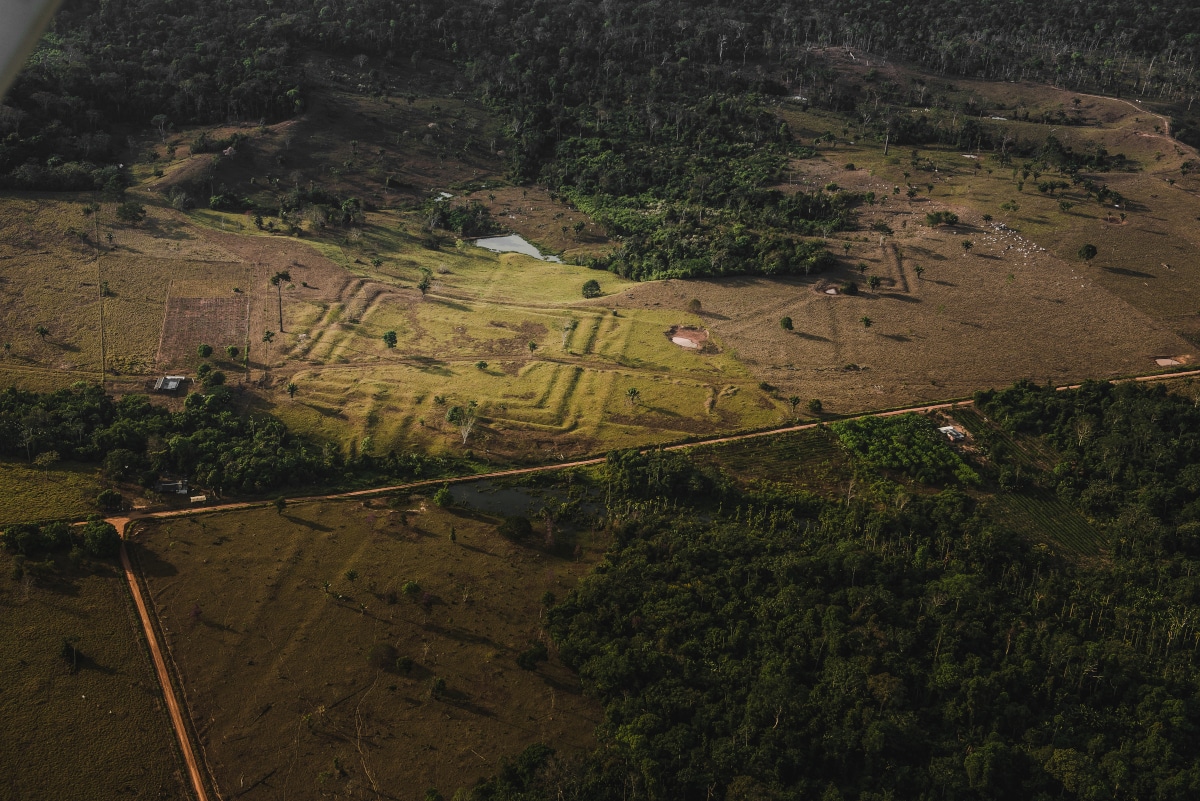
Many areas of the Amazon and the people who have called it home remain an enigma. Fortunately, technology has allowed archeologists to further learn about these ancient communities. Using LIDAR (light detection and ranging), researchers Vinicius Peripato and Luiz Aragão, aided by photographer Diego Gurgel, have unveiled a treasure. They were able to spot more than 20 previously unidentified Indigenous earthworks, of which they predict there are between 10,000 and 24,000 waiting to be discovered.
“Indigenous societies are known to have occupied the Amazon basin for more than 12,000 years, but the scale of their influence on Amazonian forests remains uncertain,” write the researchers from of Brazil’s National Institute for Space Research in a study published in Science. The team's work also revealed a consistent set of domesticated tree species associated with the earthworks, which suggests these communities had active forestry practices.
During the pre-Columbian era, the Amazon was home to dense and complex societies throughout its expansive forested area, which spans 2.59 million square miles. “These ancient Indigenous societies had profound knowledge of earthmoving, riverine dynamics, soil enrichment, and plant and animal ecology, which allowed them to create domesticated landscapes that were more productive for humans,” the scientists explain. “With earthmoving techniques, Indigenous peoples created a wide variety of earthworks (i.e., ring ditches, geoglyphs, ponds, and wells), mostly between 1,500 and 500 years before present, with social, ceremonial, and defensive functions.”
Now, Gurgel's sweeping aerial photographs have revealed massive geometric shapes among the greenery. For maximum contrast, the images were taken in the raking light of the late afternoon. Enormous squares and circles, known as geoglyphs, dot the landscape.
On top of learning more about the cultures that have populated the Amazon, this footage makes a case for those who currently live there and face unique challenges. “Today, Indigenous peoples struggle to recognize their right to land originally inhabited by their ancestors, along with the protection of their territories, languages, cultures, and heritages,” the scientists say.
Since they are the ones who know these areas better than anyone else, their insights are key to protecting the Amazon. Researchers also note: “In addition to protecting the native peoples that remain, the institution of Indigenous lands also collaborates with forest conservation in times of debates on climate change and the search for solutions that minimize impacts on the climate and promote carbon neutrality.”
Using LIDAR (light detection and ranging), researchers Vinicius Peripato and Luiz Aragão, aided by photographer Diego Gurgel, have unveiled a treasure in the Amazon rainforest.

They were able to spot more than 20 previously unidentified Indigenous earthworks.

The team predicts there are between 10,000 and 24,000 earthworks waiting to be discovered.

“Indigenous societies are known to have occupied the Amazon basin for more than 12,000 years, but the scale of their influence on Amazonian forests remains uncertain.”







Vinicius Peripato: Instagram
Luiz Aragão: Instagram
Diego Gurgel: Instagram
All images by Diego Gurgel. My Modern Met granted permission to feature photos by Vinicius Peripato.
Related Articles:
Stunning Aerial Photos Elevate Agriculture Landscapes Into High Art
Striking Photos Document Lives of Indigenous People Most Impacted by Climate Change [Interview]
Four Children Used Their Indigenous Knowledge to Survive 40 Days in the Amazon






















































































